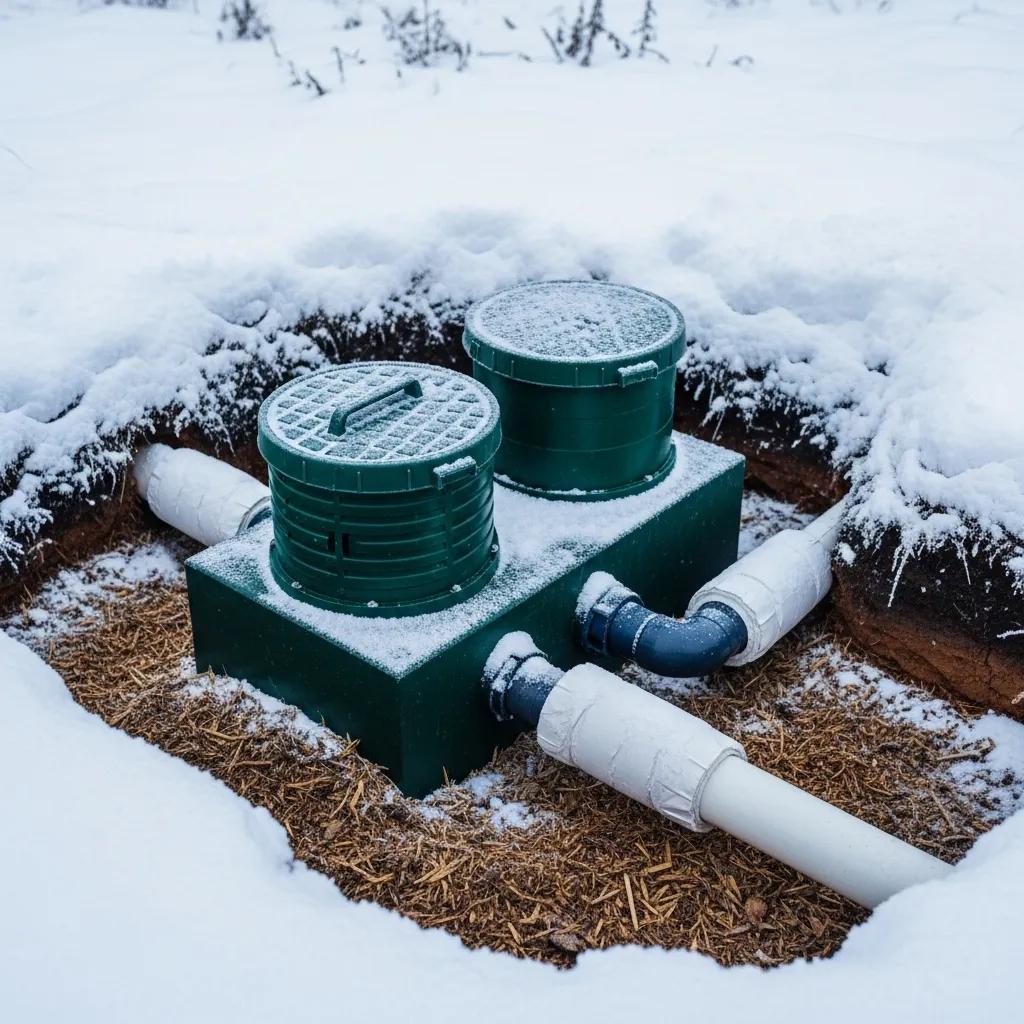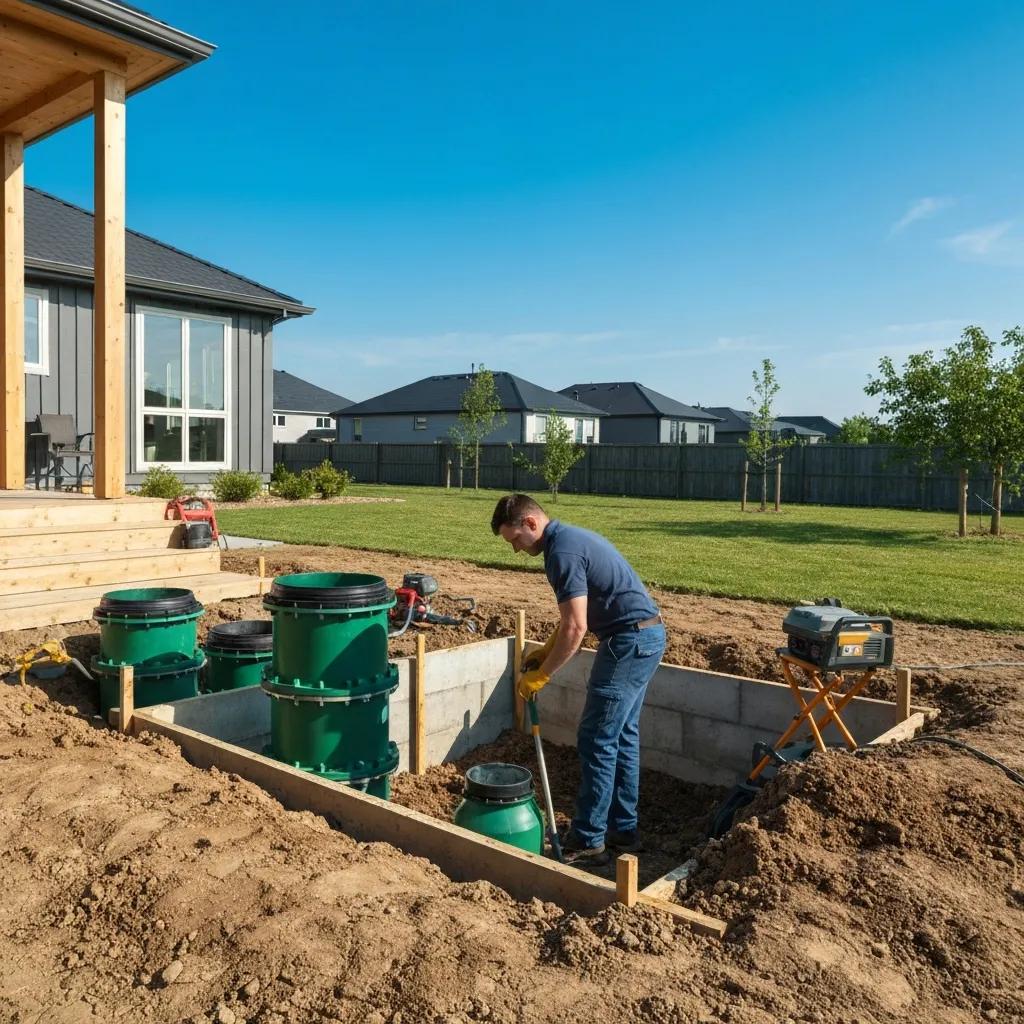Planning for a septic tank requires careful consideration to ensure optimal performance and compliance.
By understanding the fundamentals of septic tank planning, you can prevent future issues and costly repairs. Getting the site right from the start is essential for the long-term health and functionality of your septic system.
Keep reading to discover important guidelines that will help you navigate this critical process and ensure your septic tank operates at its best.
Septic Tank Planning Made Easy: What Every Homeowner Should Know
Understanding the Basics of Septic Tank Planning
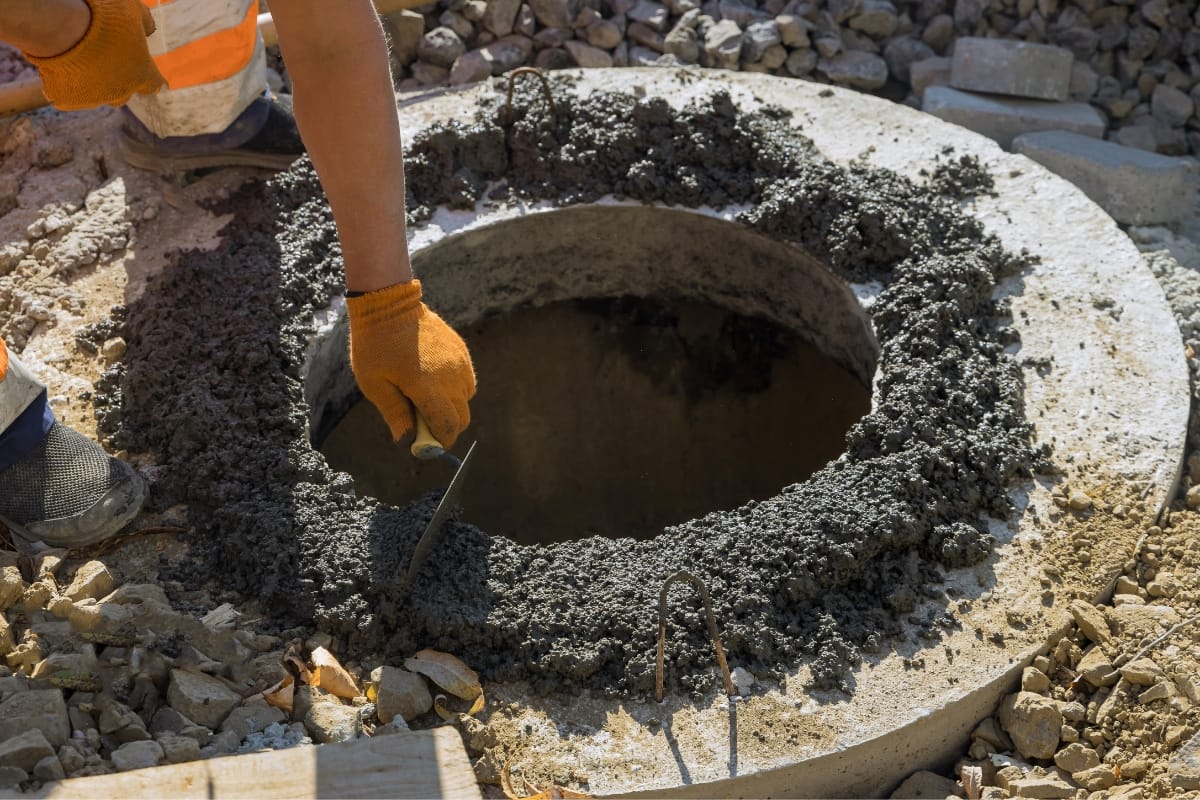
A solid understanding of septic tank planning revolves around grasping the essential components involved in a septic system. Gaining insight into these areas aids in creating a reliable and efficient septic setup.
Familiarizing Yourself With the Septic System Components
Understanding the components of a septic system is key to effective septic tank planning. A typical system consists of a septic tank, where solids settle and liquids flow out to the drain field, and a distribution box, which helps direct wastewater evenly across the drain field.
In addition, septic tank maintenance local building codes often outline specific requirements regarding setbacks from structures and bodies of water, which helps protect groundwater from contamination during floods.
| Septic System Component | Function |
|---|---|
| Septic Tank | Stores and breaks down waste materials |
| Drain Field | Allows treated wastewater to infiltrate the soil |
| Distribution Box | Distributes effluent evenly to the drain field |
Evaluating these components helps ensure compliance with local regulations during inspection processes.
Recognizing the Significance of Proper Site Selection
Proper site selection is crucial for a septic system to function effectively. Factors like the type of soil, proximity to water sources, and the placement of pipes are all essential for septic tank maintenance.
For instance, a sand filter can enhance the treatment process, but it requires the right site for optimal drainage and performance, which may involve additional fees or even seeking a variance if the conditions are less than ideal.
Learning Local Regulations and Standards for Septic Systems
Before setting up a septic tank, it’s vital to understand local regulations and standards that govern septic systems. Accessibility to proper infrastructure, like a sanitary sewer, can determine whether a septic solution is realistic for a property.
Additionally, ensuring that a pump is included if needed, and completing a percolation test helps verify the soil’s ability to absorb water, further guiding the septic tank planning process.
Conducting a Soil and Percolation Test

Before moving forward with septic tank planning, identifying suitable locations for conducting a percolation test is essential.
It is also important to document this test and align with local policy regarding septic systems to ensure compliance with licensing requirements, ultimately protecting both the environment and drinking water sources.
Identifying Suitable Locations for Percolation Tests
When choosing suitable locations for percolation tests, it’s important to avoid areas near surface water to prevent any potential contamination of local water sources.
The trench where the test is conducted should ideally be placed in a zone that offers the best drainage conditions, allowing the effluent to seep through the soil effectively. Checking local zoning regulations can help with site selection, ensuring compliance and minimizing risks to the surrounding environment.
Understanding the Implications of Soil Composition
Soil composition plays a vital role in the effectiveness of a septic system, impacting how waste is absorbed and filtered. Understanding the type of soil can help property owners comply with regulation standards set by their jurisdiction, enhancing the overall water quality.
By evaluating soil characteristics, they can better navigate the septic permit process and ensure their system operates efficiently.
Interpreting Percolation Test Results for Site Planning
Interpreting percolation test results plays a vital role in septic tank planning for septic systems. Analyzing how quickly soil absorbs water helps determine the suitability of a location for effective sewage and wastewater treatment. It also influences construction decisions, ensuring that sanitation standards are met and water resources remain protected.
Understanding soil and percolation tests sets the stage for choosing the perfect spot for your septic tank. Let’s dive into the best practices for septic tank location that can ensure optimal performance and longevity!
Septic Tank Location: Best Practices
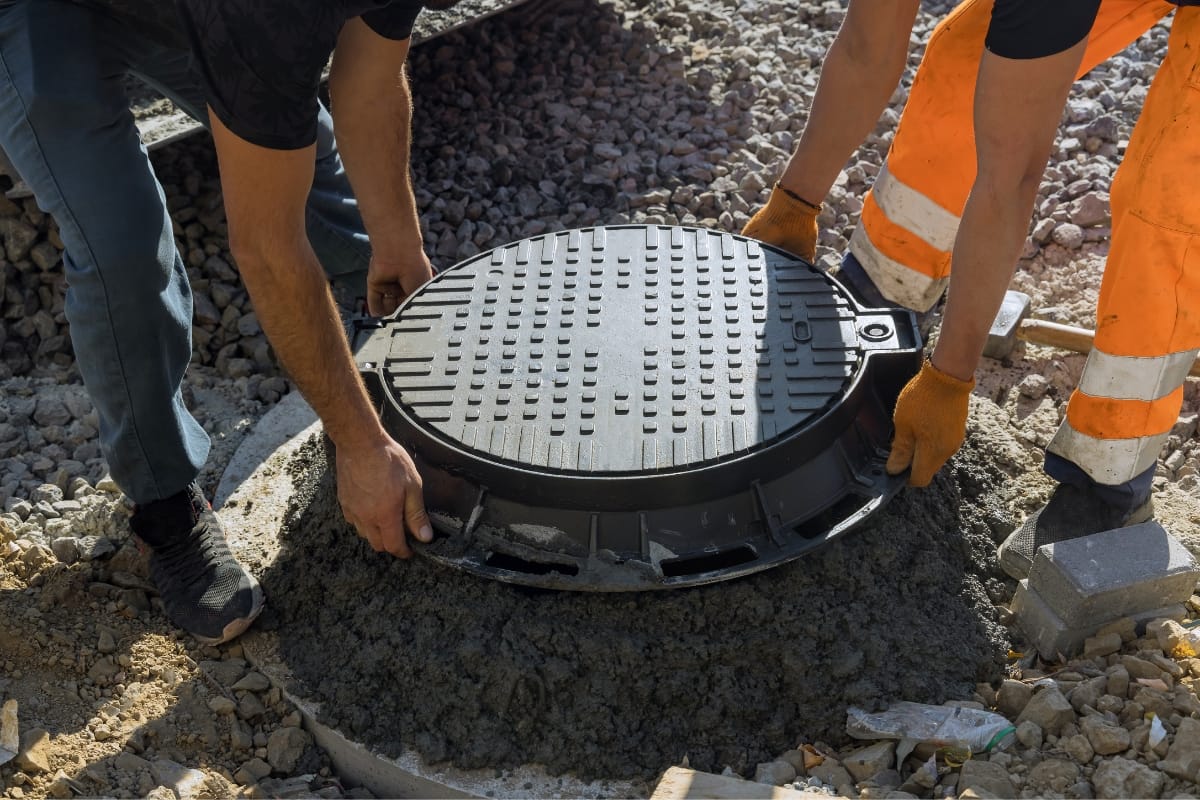
When planning the location of a septic tank, attention to detail makes a big difference in ensuring efficient sewage treatment. First, proper distance from property boundaries should always be a priority; it’s important to check local regulations during inspection.
Next, avoiding proximity to water sources and wells is key not only for safety but also for the protection of environmental health. Groundwater contamination can result from improper placement. Finally, considering future property developments is essential too.
As properties grow or change, the gravity of the situation can shift, and planning ahead helps prevent potential challenges down the line. By keeping these factors in mind, property owners can create a reliable and compliant septic system setup.
Ensuring Proper Distance From Property Boundaries
Ensuring a proper distance from property boundaries is essential for effective septic tank planning. Keeping sufficient space not only protects the tank but also prevents greywater from potentially contaminating neighboring properties, which could pose risks to public health.
Regular evaluation of the site can help identify safe distances that comply with local regulations and promote responsible land use.
Avoiding Proximity to Water Sources and Wells
Placing a septic tank too close to water sources or wells can lead to serious health risks. Contaminants from the septic system might leach into drinking water supplies, causing potential harm to both people and animals. Keeping a safe distance ensures clean water remains protected while promoting better environmental practices for everyone in the area.
Considering Future Property Developments
Thinking ahead is vital when planning the location of a septic tank, especially if property developments are on the horizon. Homeowners should anticipate potential expansion or changes in land use that could affect septic system functionality and accessibility.
By considering future buildings, landscaping, or even fencing, property owners can avoid costly relocations or upgrades down the line, ensuring their septic system remains efficient and compliant. Choosing the right septic tank location sets the stage for success.
Designing Your Septic Tank for Maximum Efficiency
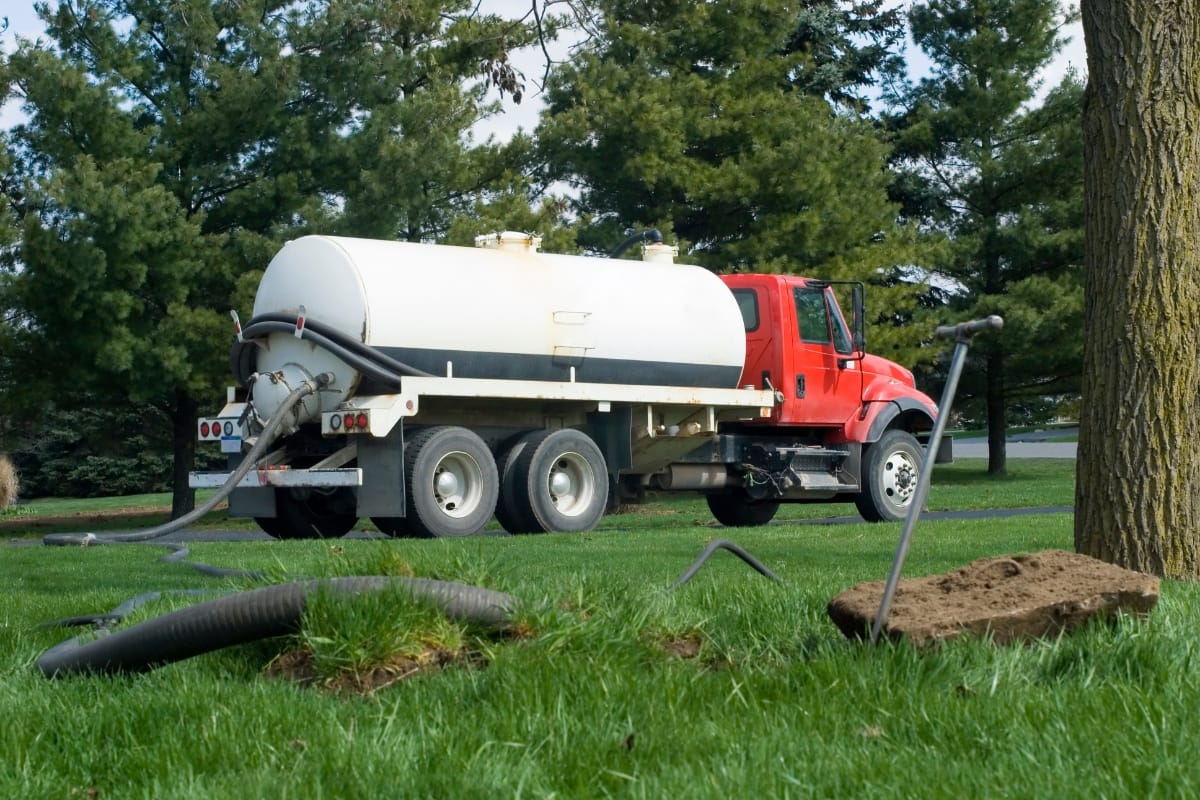
Effective design plays a crucial role in ensuring a septic system functions optimally. By addressing these key areas, property owners can create a septic setup that is both efficient and reliable.
Selecting the Right Size and Type of Septic Tank
Selecting the right size and type of septic tank is key to maintaining a smooth-running system.
Property owners should consider the number of bedrooms in a home or the expected water usage in a commercial setting when determining the size. In addition, choosing a tank made from durable materials can improve longevity and performance.
Several factors help decide the type of septic tank to install: soil conditions, local regulations, and the specific needs of the property.
For example, concrete tanks are often favored for their strength, while plastic tanks are lighter and easier to install. Some systems may even call for advanced treatment options if the waterfront is nearby or if the site has specific regulatory requirements to meet:
| Tank Type | Advantages |
|---|---|
| Concrete | Durable and long-lasting |
| Plastic | Lightweight and easy to install |
| Fiberglass | Resistant to corrosion |
By assessing the specific context of each property, property owners can align their choice of septic tank with local guidelines and their individual needs. This careful consideration ultimately promotes efficient wastewater management.
Planning for Leach Field Layout and Dimensions
Planning the layout and dimensions of the leach field is a vital step in septic system design. A properly designed leach field should allow effluent to disperse effectively, preventing any buildup that could hinder performance.
Factors like the size of the property and soil characteristics influence how the leach field is laid out, ensuring it meets both functionality and local regulations for optimal operation.
Incorporating Energy-Efficient Features
Incorporating energy-efficient features is vital for optimizing septic system performance and minimizing impact on the environment. Property owners can consider installing a properly sized pump and timer system that operates only when needed, rather than running continuously.
Additionally, using advanced treatment methods can enhance overall efficiency while reducing energy consumption, helping to maintain a sustainable sewage management approach.
- Select the right pump with energy-efficient options.
- Use a timer system to regulate pump operation.
- Consider advanced treatment methods for better results.
Once you’ve crafted the perfect septic tank setup, it’s time to shift gears and tackle the important legalities that come with it. Meeting the necessary building codes and regulations ensures your system operates smoothly and safely for years to come.
Navigating Legal Requirements and Building Codes

Understanding the legal requirements and building codes is a critical step for anyone planning to install a septic system.
Obtaining Necessary Permits and Inspections
Obtaining necessary permits and inspections is vital for anyone looking to set up a septic system. Property owners should connect with local authorities to understand specific requirements and ensure they have all the needed documentation in place. This proactive step not only streamlines the septic tank construction process but also safeguards the system against future issues or violations.
Complying With Local and State Septic System Regulations
Complying with local and state septic system regulations is crucial for homeowners and property developers alike.
These regulations often dictate the specific design, installation, and maintenance practices required to ensure safe and effective wastewater management. By staying informed about these rules, property owners can avoid costly fines and ensure their systems operate smoothly for years to come.
Keeping Thorough Records of the Planning and Installation Process
Keeping thorough records during the septic tank planning and installation process of a septic system proves beneficial for property owners.
Documentation helps track important details, such as permits obtained, inspections completed, and choices made about the system design. By maintaining accurate records, owners ensure compliance with local regulations and facilitate future maintenance and upgrades.
With regulations and building codes in your rearview mirror, it’s time to elevate your septic system project. Engaging a septic service professional can make all the difference in ensuring a smooth septic system installation that meets every requirement.
Professional Consultation and Installation

Bringing in experienced and certified professionals is a smart move when it comes to septic tank planning. Working with skilled professionals lays a solid foundation for a reliable and efficient septic setup.
Choosing Experienced and Certified Septic System Professionals
Choosing experienced and certified septic system professionals can make a world of difference in septic tank planning.
These experts bring valuable insights into local regulations and best practices, ensuring that installations are compliant and efficient. Their familiarity with various site conditions helps in crafting a tailored approach that optimizes the overall performance of the septic system.
Understanding the Role of Professional Site Evaluations
Professional site evaluations are essential in identifying the most suitable location for a septic tank installation. These experts assess soil conditions, drainage patterns, and nearby water sources, helping property owners make informed decisions. Their recommendations are based on years of experience, significantly reducing the risk of future problems.
| Evaluation Factor | Importance |
|---|---|
| Soil Type | Determines absorption rates and system effectiveness |
| Drainage Patterns | Affects how wastewater disperses underground |
| Proximity to Water Sources | Helps protect drinking water from contamination |
By utilizing professional site evaluations, property owners not only comply with regulations but also enhance their septic system’s performance for the long term.
Leveraging Expert Advice for Unique or Challenging Sites
Unique or challenging sites may require extra attention when septic tank planning. Engaging experienced professionals ensures a thorough assessment of factors like slope, soil composition, and proximity to water bodies.
These experts can offer tailored solutions that enhance functionality while adhering to local regulations and environmental standards.
| Site Factor | Consideration |
|---|---|
| Slope | Affects drainage and effluent distribution |
| Soil Composition | Impacts absorption rates and system effectiveness |
| Water Source Proximity | Ensures protection against contamination |
Professional insights can help navigate these complexities and lead to efficient, compliant installations.
Conclusion
Proper septic tank design and planning is crucial for a system that runs smoothly and efficiently for years to come. By following key guidelines on septic system location, size, and maintenance, homeowners can avoid costly repairs, protect the environment, and enjoy peace of mind.
For expert guidance in planning and maintaining your septic system, trust Smart Septic Pros to get the job done right. Reach out to us at 678-993-4545 or visit our website to fill out our contact form for reliable and affordable septic solutions. Let us help you keep your system running at its best!


